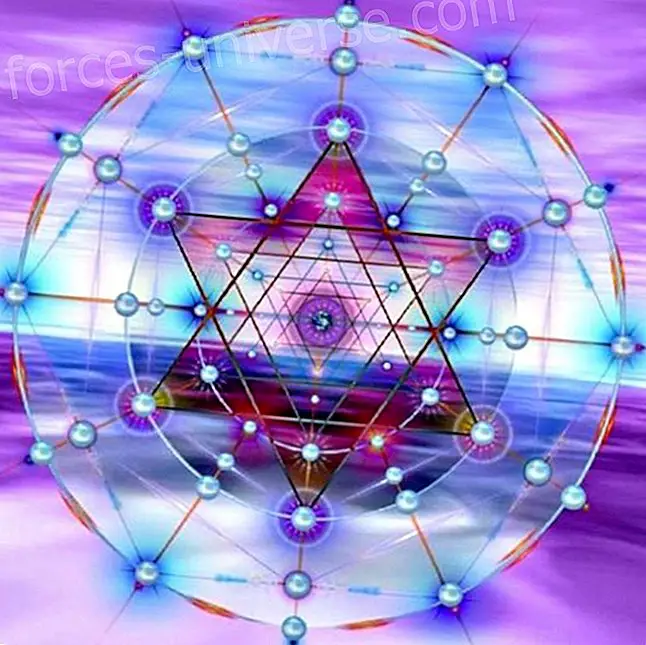 Can affectivity be the subject of an anthropological study? The anthropologist Alexandre Surrallés intends to offer answers to this question based on the ethnographic study (the first) of the Candoshi, a group of indigenous hunters and horticulturists of the Upper Amazon, in the northern limits of the Peruvian jungle. In this jíbaro society, it is said to "see with the heart" referring to this organ as the seat of all feelings, of thought and as the center of the person. And he writes: “Affects can be perceived as instincts assumed by language, mediated by intellect and culture and, therefore, susceptible to cultural differentiation.” “A field work of almost three years in the Upper Amazon, with An indigenous group called Candoshi has allowed me to put these ideas into practice. The Candoshi are established on the tributaries of Pastaza, north of the Peruvian Amazon. ”“ The key notion of the Candoshi theory of perception is the notion of “heart, ” called magish in the native language. The Candoshi say unambiguously that it is seen with the heart, even in dreams. Magish is also the point of convergence of the different elements that make up the person and this for a simple reason: it is believed that the vital principle is found in the blood. The first organ that is created during embryogenesis is the heart. In fact it is the heart that thanks to its beats will drive this process, forming the two most important components of the person, vanotsi, that could be translated by body but that refers to the substance that composes it, and vani, concept translated by ' soul 'for the missionaries but that designates the intentionality that animates the person and shapes his body. The Candoshi consider that only in the heart are the different states and faculties that we would call psychic, including other more somatic processes. This fundamental fact is expressed in the large number of expressions whose subject is the heart, magish. The Candoshi consider that only in the heart are the different states and faculties that we would call psychic, including other more somatic processes. This fundamental fact is expressed in the large number of expressions whose subject is the heart, magish.
Can affectivity be the subject of an anthropological study? The anthropologist Alexandre Surrallés intends to offer answers to this question based on the ethnographic study (the first) of the Candoshi, a group of indigenous hunters and horticulturists of the Upper Amazon, in the northern limits of the Peruvian jungle. In this jíbaro society, it is said to "see with the heart" referring to this organ as the seat of all feelings, of thought and as the center of the person. And he writes: “Affects can be perceived as instincts assumed by language, mediated by intellect and culture and, therefore, susceptible to cultural differentiation.” “A field work of almost three years in the Upper Amazon, with An indigenous group called Candoshi has allowed me to put these ideas into practice. The Candoshi are established on the tributaries of Pastaza, north of the Peruvian Amazon. ”“ The key notion of the Candoshi theory of perception is the notion of “heart, ” called magish in the native language. The Candoshi say unambiguously that it is seen with the heart, even in dreams. Magish is also the point of convergence of the different elements that make up the person and this for a simple reason: it is believed that the vital principle is found in the blood. The first organ that is created during embryogenesis is the heart. In fact it is the heart that thanks to its beats will drive this process, forming the two most important components of the person, vanotsi, that could be translated by body but that refers to the substance that composes it, and vani, concept translated by ' soul 'for the missionaries but that designates the intentionality that animates the person and shapes his body. The Candoshi consider that only in the heart are the different states and faculties that we would call psychic, including other more somatic processes. This fundamental fact is expressed in the large number of expressions whose subject is the heart, magish. The Candoshi consider that only in the heart are the different states and faculties that we would call psychic, including other more somatic processes. This fundamental fact is expressed in the large number of expressions whose subject is the heart, magish.  magish kama: its literal translation is "sweet heart", because kama is also used in the context of flavors. These terms are used to express the feeling of tranquility . The subject has no problem and all their social relationships follow one another in harmony. Magish Kisa: literally "cheerful heart" expresses the emotion or feeling of relief that happens to a problem or concern with someone else. magish vanasircha: very close to the adjective kama, vanasircha has, however, a more euphoric connotation. It refers to the joy of living, satisfaction, well-being, unlike Kisa, this joy is not the result of a happy outcome. magish shabatchich: its literal translation is "healed heart", but it expresses rather a form of joy or satisfaction linked to a fulfilled hope or a relationship of trust with someone. magish mantsartarich: its literal translation is "impure heart", because the adjective is a derivative of the Mants root - which refers to the notion of impurity. It means being or feeling sorry for a serious event such as the death of a close relative or the abandonment of the husband or wife. magish tsiyantárich: literally "furious heart" is used in the sense of being or feeling angry or irritated by someone. Magish Maipirich: literally "worried heart", but more comprehensive information is lacking to give the exact meaning of this expression. This is used when you are distressed due to a problem that can not be mastered and whose solution is in the hands of a person considered untrained or unreliable. Magish Psikish: Heart that remembers something that must be taken into account in a given situation. magish m maarp maam: the literal translation is coraz n that flashes (from mamaaro which means lightning), it is a metaphor for saying heart that is wrong or se wrong because of it. Magish Pshtokich: The literal translation is probably heart that comes in. This expression is used to say heart that understands and applies, for example to someone who is attentive, who learns. mag anamaama: very close to the previous expression, this verb also means learn or understand magish kx rakich: the literal translation is next to the expression coraz n impeded, the adjective derives from kx r maama, verb which means impend . This formula expresses a decision of rejection . magish t atkic: the literal translation is coraz n that is supported or rested, to say that you have confidence in a person. magish vayakich: the literal translation is coraz n saved . This term derives from vay amaama which means guardar . The expression is used to refer to the confession of a fault or a bad attitude and the correction that follows it. magish tachitkich: the literal translation is coraz n which follows or continue with the heart n . This word comes from t ch tamaama, a verb that means follow . It is used to express the determination to assume a responsibility, an agricultural task for example, even against the negative opinion of some. magish tominkich: the literal translation is coraz n fulfilled, since the term comes from tom nomaama, which means precisely to comply . You can order a bowl of cassava beer and someone serves it immediately because it has the coraz n fulfilled The most important principles that make up the person, the vanotsi body, the soul vani and the magish heart are not exclusive attributes of the human person. Animals but also vegetables, meteorological phenomena, spirits can possess these principles. In reality, the difference in species is not the sign of a difference of essence but of a different intentional intensity, that is, of a difference in the ability to perceive and act. The hierarchy of humans and nonhumans is headed by the jaguar . Among humans, the great warriors are the ones with the greatest aptitude. These preeminent beings are those who possess the greatest heart, which gives them superior capacities for interaction in the world. There are people like the turtle that have a small heart and therefore a low level of intensity of animation. ”“ A person's own life and, in particular, his determination to get involved in matters that concern him, change his heart reinforcing it . The concrete way in which this happens can be described from the most important rituals performed by Candoshi: the magomaama, which can be translated by something like the act of the heart, to face the challenges of the facts of life . ”
magish kama: its literal translation is "sweet heart", because kama is also used in the context of flavors. These terms are used to express the feeling of tranquility . The subject has no problem and all their social relationships follow one another in harmony. Magish Kisa: literally "cheerful heart" expresses the emotion or feeling of relief that happens to a problem or concern with someone else. magish vanasircha: very close to the adjective kama, vanasircha has, however, a more euphoric connotation. It refers to the joy of living, satisfaction, well-being, unlike Kisa, this joy is not the result of a happy outcome. magish shabatchich: its literal translation is "healed heart", but it expresses rather a form of joy or satisfaction linked to a fulfilled hope or a relationship of trust with someone. magish mantsartarich: its literal translation is "impure heart", because the adjective is a derivative of the Mants root - which refers to the notion of impurity. It means being or feeling sorry for a serious event such as the death of a close relative or the abandonment of the husband or wife. magish tsiyantárich: literally "furious heart" is used in the sense of being or feeling angry or irritated by someone. Magish Maipirich: literally "worried heart", but more comprehensive information is lacking to give the exact meaning of this expression. This is used when you are distressed due to a problem that can not be mastered and whose solution is in the hands of a person considered untrained or unreliable. Magish Psikish: Heart that remembers something that must be taken into account in a given situation. magish m maarp maam: the literal translation is coraz n that flashes (from mamaaro which means lightning), it is a metaphor for saying heart that is wrong or se wrong because of it. Magish Pshtokich: The literal translation is probably heart that comes in. This expression is used to say heart that understands and applies, for example to someone who is attentive, who learns. mag anamaama: very close to the previous expression, this verb also means learn or understand magish kx rakich: the literal translation is next to the expression coraz n impeded, the adjective derives from kx r maama, verb which means impend . This formula expresses a decision of rejection . magish t atkic: the literal translation is coraz n that is supported or rested, to say that you have confidence in a person. magish vayakich: the literal translation is coraz n saved . This term derives from vay amaama which means guardar . The expression is used to refer to the confession of a fault or a bad attitude and the correction that follows it. magish tachitkich: the literal translation is coraz n which follows or continue with the heart n . This word comes from t ch tamaama, a verb that means follow . It is used to express the determination to assume a responsibility, an agricultural task for example, even against the negative opinion of some. magish tominkich: the literal translation is coraz n fulfilled, since the term comes from tom nomaama, which means precisely to comply . You can order a bowl of cassava beer and someone serves it immediately because it has the coraz n fulfilled The most important principles that make up the person, the vanotsi body, the soul vani and the magish heart are not exclusive attributes of the human person. Animals but also vegetables, meteorological phenomena, spirits can possess these principles. In reality, the difference in species is not the sign of a difference of essence but of a different intentional intensity, that is, of a difference in the ability to perceive and act. The hierarchy of humans and nonhumans is headed by the jaguar . Among humans, the great warriors are the ones with the greatest aptitude. These preeminent beings are those who possess the greatest heart, which gives them superior capacities for interaction in the world. There are people like the turtle that have a small heart and therefore a low level of intensity of animation. ”“ A person's own life and, in particular, his determination to get involved in matters that concern him, change his heart reinforcing it . The concrete way in which this happens can be described from the most important rituals performed by Candoshi: the magomaama, which can be translated by something like the act of the heart, to face the challenges of the facts of life . ”  “A ritual is the search for arutam vision : to recover the mood, before a childbirth, before enrolling in a warrior expedition… In any of these situations, Candoshi men and women undertake severe food and sexual abstinence combined with taking narcotics, in a place away from family settlements, always in relative isolation, although accompanied by a mentor. The goal is to get a vision, arutam, of an animal . The type of animal and its meaning will depend on the abilities attributed to it in the field required by the practitioner: a jaguar if an aptitude for war is sought, a mouse if an easy birth is sought, etc. This is how suddenly the old man's spectrum will appear and tell him that he will live a long time and not worry about the circumstances he must face in the future. The old man will offer you a ball of light that the visionary will ingest. This ball of light will be installed in the heart to provide renewed perception and action capabilities. The practitioner will return to ordinary life and will not tell anything about his experience. However, he will not be able to hide a more lively attitude and a greater willingness to respond with determination to the challenges for which he has undertaken the search for the vision. ”The Candoshi People are one of those who have suffered the most from the impact of extractive activities: It was considered endangered due to hepatitis B, which infected 80% of the population. According to the Candoshi, this disease did not exist until oil activities began in the upper Pastaza. Although vaccination campaigns have prevented this town from tithing, it paid a high price: of the 159 indigenous people infected with the Chuinda CN virus, only 79 of them survived in 2011, according to the Wazuriri organization. Now the Candoshi (meaning "more people") are better organized and are gradually regaining control of their ancestral territories. They expelled the officials of the Ministry of Fisheries that allowed the looting of the rich fishing resources of Lake Rimachi, or Musa Karusha, renamed in honor of a heroic warrior of the past, whose memory is remembered in the kitchen of the communities until the day of today. For Fidel Nanantay, native leader resident in San Lorenzo, “the riches of Lake Rimachi could be exploited indiscriminately without the vigilance of these guardians of the lake, whose fate could be marked by the greed of settlers, bad politicians and loggers, who want to take over and enrich themselves with the wood of the forests that they take care of jealously, just as their ancestors did. ” A long way to recover what was once yours. Magish Tominkich
“A ritual is the search for arutam vision : to recover the mood, before a childbirth, before enrolling in a warrior expedition… In any of these situations, Candoshi men and women undertake severe food and sexual abstinence combined with taking narcotics, in a place away from family settlements, always in relative isolation, although accompanied by a mentor. The goal is to get a vision, arutam, of an animal . The type of animal and its meaning will depend on the abilities attributed to it in the field required by the practitioner: a jaguar if an aptitude for war is sought, a mouse if an easy birth is sought, etc. This is how suddenly the old man's spectrum will appear and tell him that he will live a long time and not worry about the circumstances he must face in the future. The old man will offer you a ball of light that the visionary will ingest. This ball of light will be installed in the heart to provide renewed perception and action capabilities. The practitioner will return to ordinary life and will not tell anything about his experience. However, he will not be able to hide a more lively attitude and a greater willingness to respond with determination to the challenges for which he has undertaken the search for the vision. ”The Candoshi People are one of those who have suffered the most from the impact of extractive activities: It was considered endangered due to hepatitis B, which infected 80% of the population. According to the Candoshi, this disease did not exist until oil activities began in the upper Pastaza. Although vaccination campaigns have prevented this town from tithing, it paid a high price: of the 159 indigenous people infected with the Chuinda CN virus, only 79 of them survived in 2011, according to the Wazuriri organization. Now the Candoshi (meaning "more people") are better organized and are gradually regaining control of their ancestral territories. They expelled the officials of the Ministry of Fisheries that allowed the looting of the rich fishing resources of Lake Rimachi, or Musa Karusha, renamed in honor of a heroic warrior of the past, whose memory is remembered in the kitchen of the communities until the day of today. For Fidel Nanantay, native leader resident in San Lorenzo, “the riches of Lake Rimachi could be exploited indiscriminately without the vigilance of these guardians of the lake, whose fate could be marked by the greed of settlers, bad politicians and loggers, who want to take over and enrich themselves with the wood of the forests that they take care of jealously, just as their ancestors did. ” A long way to recover what was once yours. Magish Tominkich Sources:
http://surralles.wordpress.com/publications/
http://www.iai.spk-berlin.de/fileadmin/dokumentenbibliothek/Indiana/Indiana_19_20/04surralles1009.pdf
http://diariolaregion.com/web/2012/05/26/caldo-candoshi/ ![]()
The candoshi: the beat of life






